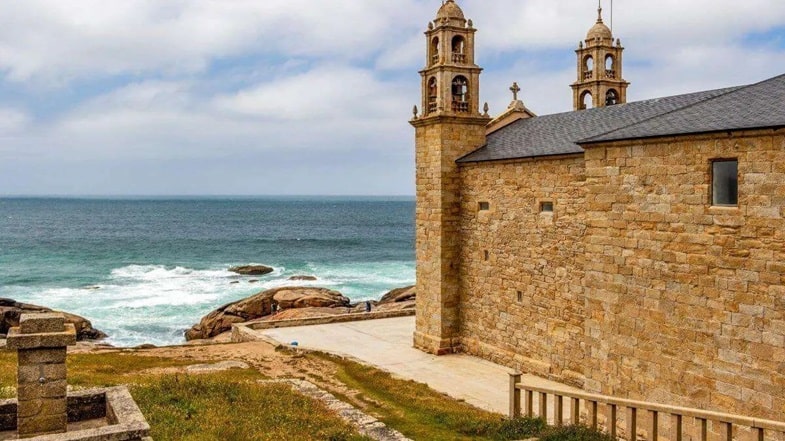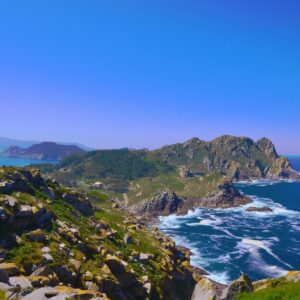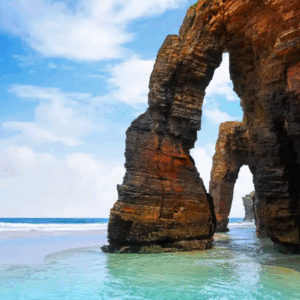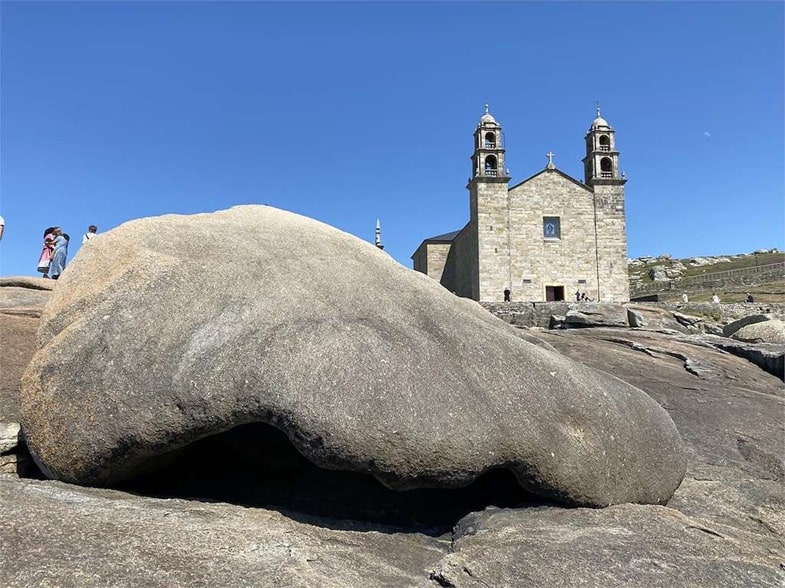Muxía and its famous Magic Stones

Table of Contents
The Magic Stones of Muxía: Legend, Tradition and Nature
Muxía is a small fishing town on the Galician coast, known for its natural charm, its traditions and, above all, for its famous magic stones.
Located on the Costa da Morte, this town is not only famous for its rugged landscapes and pristine beaches, but also for its deep connection with ancient legends and religious symbolism. One of the most emblematic places is the Sanctuary of the Virgen de la Barca and the set of magical stones that surround it, where myth and reality intertwine in a unique harmony.
Galicia travels products
-

Rias Baixas Excursion
Rated 4.93 out of 530,00€ – 55,00€Price range: 30,00€ through 55,00€ Select date(s) This product has multiple variants. The options may be chosen on the product page -

Playa de Catedrales – Mariña Lucense – Asturias
Rated 4.92 out of 535,00€ – 60,00€Price range: 35,00€ through 60,00€ Select date(s) This product has multiple variants. The options may be chosen on the product page -

French Way
360,00€ – 2.150,00€Price range: 360,00€ through 2.150,00€ Select options This product has multiple variants. The options may be chosen on the product page -
Sale!

Finisterre, Muxía, Costa da Morte
Rated 4.94 out of 520,00€ – 49,00€Price range: 20,00€ through 49,00€ Select date(s) This product has multiple variants. The options may be chosen on the product page
The Sanctuary of the Virgin of La Barca and the Sacred Stones
The Sanctuary of the Virgin of La Barca is one of the oldest pilgrimage sites in Galicia and dates back to the 12th century. It is said that this place was visited by the Apostle Santiago in his mission to evangelize Hispania. According to legend, the Apostle was discouraged because he saw that his mission was not achieving great progress in this land of Celtic peoples and ancient mythologies. It was then that the Virgin Mary appeared to him in a stone boat to encourage him. Thus, this place became a point of Marian devotion and a symbol of hope and perseverance for pilgrims and devotees.
The site is surrounded by three stones known as “Piedra de Abalar,” “Piedra dos Cadrís,” and “Piedra dos Namorados,” which are considered sacred and have miraculous properties. Each of these rocks has a specific function and story that has been passed down from generation to generation. These stones are part of a set of rituals and popular beliefs that attract tourists and devotees in search of health, love or simply a moment of spirituality and connection with nature.
The Stone of Abalar: Power and Balance
The Abalar Stone is, perhaps, the best known of the three. It is a large, flat, elongated rock that is held on a point, allowing it to oscillate or “sway” when moderate force is applied. Legend has it that this stone is a testimony of faith and an instrument of divine judgment. According to tradition, those who manage to make the stone move demonstrate their innocence or purity of heart. In ancient times, the sailors of Muxía used it to predict the state of the seas and the fishing: if they managed to make it oscillate, it was considered a sign of good omen for the day.
Over time, the Stone of Abalar has been seen as a symbol of balance and connection with the spiritual world. Even today, visitors try to make it oscillate, searching in its movement for some sign or answer to their concerns. His ability to “abalar” is a mystery and one of the many elements that fuel the fascination with the place.
Read also : FINISTERRE-MUXÍA: THE BEST OF COSTA DA MORTE

The Cadrís Stone: Health and Healing
The Piedra dos Cadrís, or “Stone of the Hips,” is shaped like a gigantic vertebra and, according to legend, has healing properties, especially for ailments related to bones and joints. Tradition indicates that to obtain the benefits of the stone, one must pass under it nine times. This ritual, repeated since time immemorial, has turned this stone into a symbol of health and healing.
The inhabitants of Muxía and pilgrims who visit the sanctuary come to the Piedra dos Cadrís in the hope of relieving pain or illness. This type of ritual is one of the oldest manifestations of Galician popular medicine, where the mystical and the natural are intertwined, remembering the times when the Celtic people venerated the elements of nature in search of well-being and balance.
La Piedra dos Namorados, the stone of love
The third stone is the Piedra dos Namorados, known as the “Stone of Lovers.” As its name indicates, it is related to love and romantic relationships. Couples looking to strengthen their relationship or people who want to find their “better half” perform a small ritual: both must touch the stone at the same time, and it is believed that the act guarantees a lasting and sincere relationship.
In Muxía, this stone is especially visited during the festival of the Virgen de la Barca, which is celebrated on the second Sunday of September. On this occasion, couples and devotees gather to ask blessings from the Virgin and the stones, keeping alive a tradition that mixes religious fervor with ancient Celtic beliefs.
Read also: MUXÍA: THE CAPITAL OF THE COSTA DE LA MUERTE
Muxía: Nature and Spirituality
Beyond the magical stones and their legends, Muxía is a place that invites introspection and contemplation. Its wild coasts, the Atlantic Ocean that hits the rocks and the mysticism that surrounds the S sanctuary of the Virgen de la Barca make this destination a special place, where faith, history and nature are intertwined in a space full of peace.
The magical stones of Muxía remind us that, sometimes, the most powerful symbols are those that are rooted in the land and traditions of a people. Visiting Muxía is connecting with a mystical past, where the human and the divine, the tangible and the invisible, are in a balance that continues to captivate those who seek a spiritual refuge or a little magic in their lives.
And the good thing is that nowadays it is quite easy to visit this famous town on the Costa de la Muerte, agencies like Galicia Travels have great experience making trips to places as important as Santa Maria de la Barca or Finisterre. And the good thing is that it is possible with just one click. Without a doubt an experience not to be missed.
